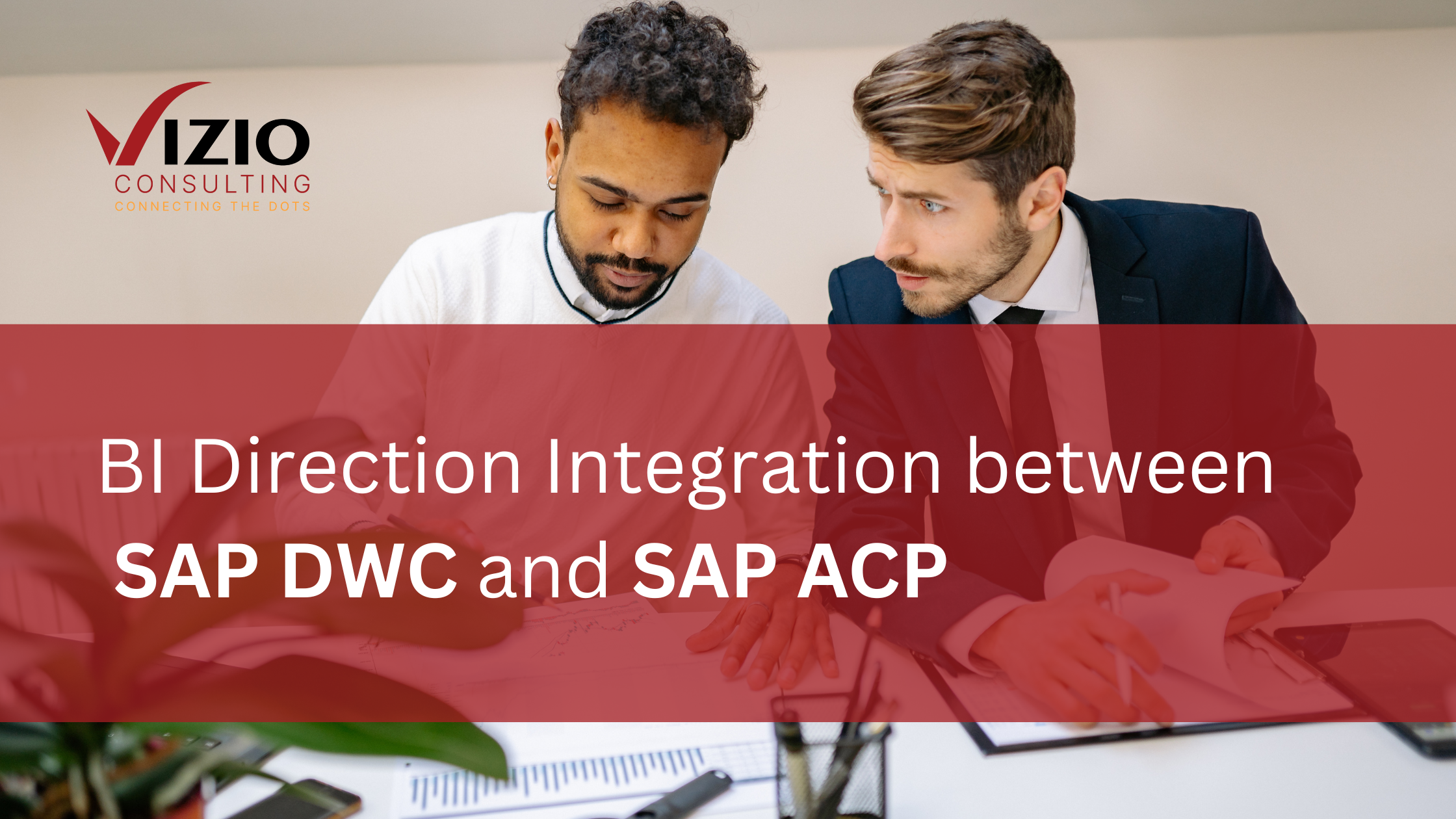SAP has a lot of infrastructures that can help with a lot of business operations. Two of the most used, integral solutions are the SAP Data Warehouse Cloud and SAP Analytics Cloud for Planning.
What is SAP DWC?
The Data Warehouse Cloud helps enterprises extend their on-premise data warehouses. This includes SAP HANA as for SQL data warehousing, SAP BW 4/HANA and other third party vendor environments. The ‘on-premise and cloud’ hybrid environment lets the enterprises pick their own speed and choose what to keep on the cloud and what to keep on their local setup.
What is DATA ACP?
The Planning tool is part of the SAP Analytics Cloud offering. The other two products offered are the BI solution and the predictive analytics solution. The application provides a native SAP experience, secure and unified data driven decision making solution.
Does a DWC and ACP integration help my business?
Let’s put this in simpler terms. One is a data warehouse, and the other one is a analytics for planning tool. Integrating them definitely helps, let along facilitating a two way integration. Today, the two solutions are already coupled and used for reuse of model semantics such as currency conversion and multi-language support.
However, SAP has recently announced a stronger planning centered integration between the two solutions. The bi-directional integration is available in a controlled release and we’re expecting to see more news about the same from SAP.
How does this integration help me?
The integration facilitates free data movement from one solution to another. For instance the data tables, fact data and even master data sets from the SAP DWC can be loaded on to the SAP ACP. This means that there’s lesser involvement of third party integrators, and there’s no time and data loss trying to push data from the data warehouse to analytics cloud.
It doesn’t stop there, though. The warehouse can retract the same data from analytics cloud models and use it the Data Warehouse. Since both these applications support cloud, the migration is simpler and cost effective. The interoperability of having one solution on-premise and the other on cloud should be discussed case to case. You can reach out to us at VIZIO anytime, and we’ll be open to help.
API based data transfer
SAP is expected to release the API that helps in this data migration by Q3 of 2022. This public API can help enterprises in replicating the fact and master data from the data warehouse into the analytics cloud. For planning purposes, this API hook hols good. There is as always with any API an authentication against the warehouse cloud from the analytics cloud to be able to access the data.
Few characteristics of the API are that it supports data layer entities ear marked as the expose for consumption entities, including semantic type analytical data set. It also supports OAuth and OData. For OData, parameters like select, filter, top, skip and count are all selected.
After the API connection is established, the enterprise users can decide whether to load data brought in from the Data Warehouse to be loaded into an existing data model, or to build a model from the scratch via the OData service connection. The data acquisition limits of SAC still apply, FYI.
Another option is to use the DES or Data Export Services API that’s been around already, available for all analytics cloud customers. There’s no real dedicated UI, and it simply facilitates planning model extraction from an external platform, which in this case is the Data Warehouse solution.
This API helps in extracting fact data, master data and audit data. The API enables basic data extraction and filtering, while the full delta capabilities on the SAP road map. While both business and technical users can access it, it is available only for the cloud foundry tenants. While this API hook can be put to use in different places, one of the most anticipated use will be to simplify processing of plan data generated in the ACP.
How can I make use of this?
For now, you can’t. We will have to keep using the available solutions and make do with it, but the API that lets bi-directional integration is due for release in Q3 2022, and VIZIO can help you integrating the two solutions to provide you with automated planning on enriched internal and external data. This could drastically simplify the data modelling efforts involved during the planning. As more and more solutions surface from the house of SAP, VIZIO can keep providing you with a lot more customized solutions, that can fit your requirements.
To know how to technically prep your setup for this bi-directional integration between SAP DWC and SAP ACP, do drop us an email or give us a call, and our team of experts can help you with it.
Our experts provide personalized demos after understanding the business needs. Click
here to talk to our experts.

